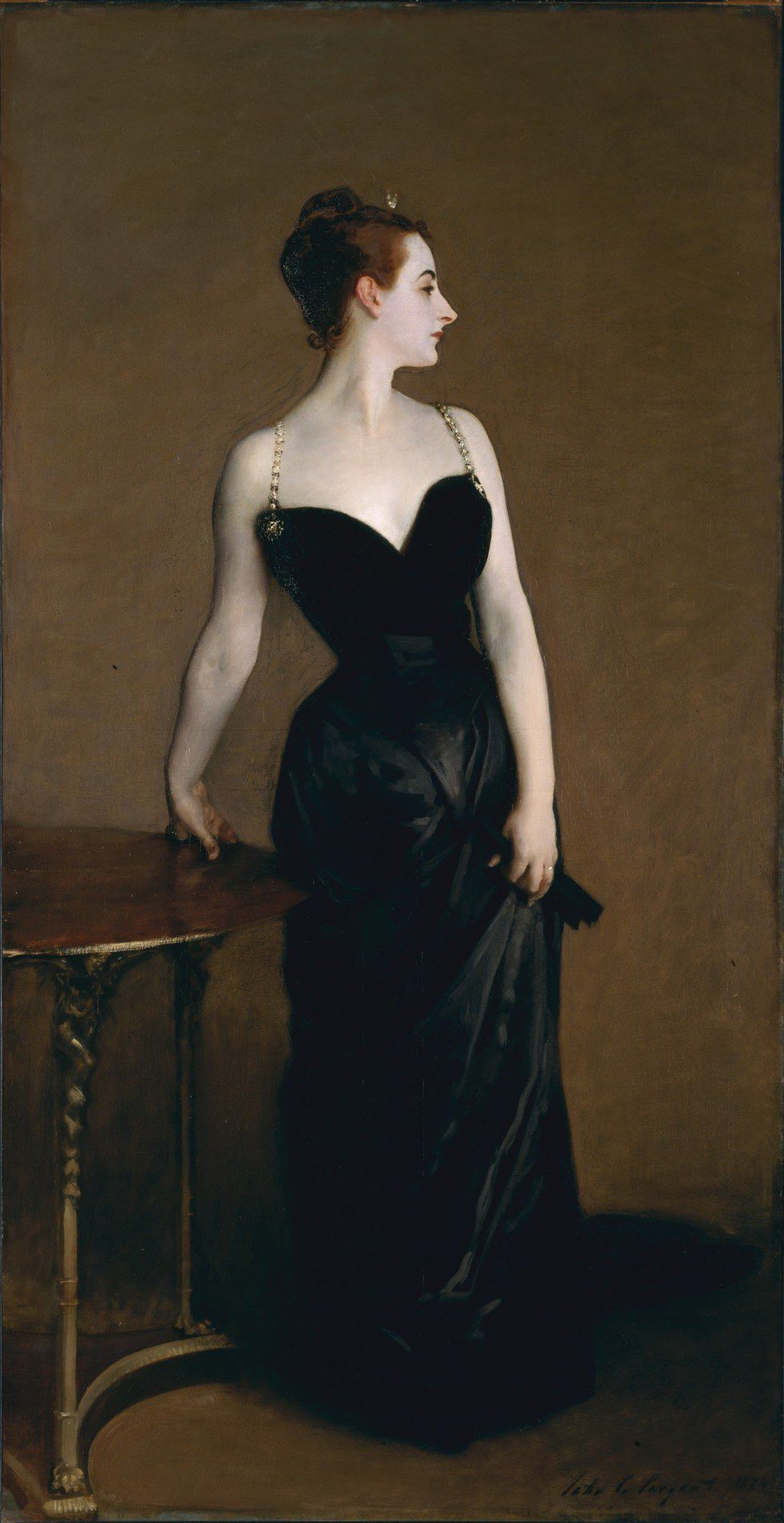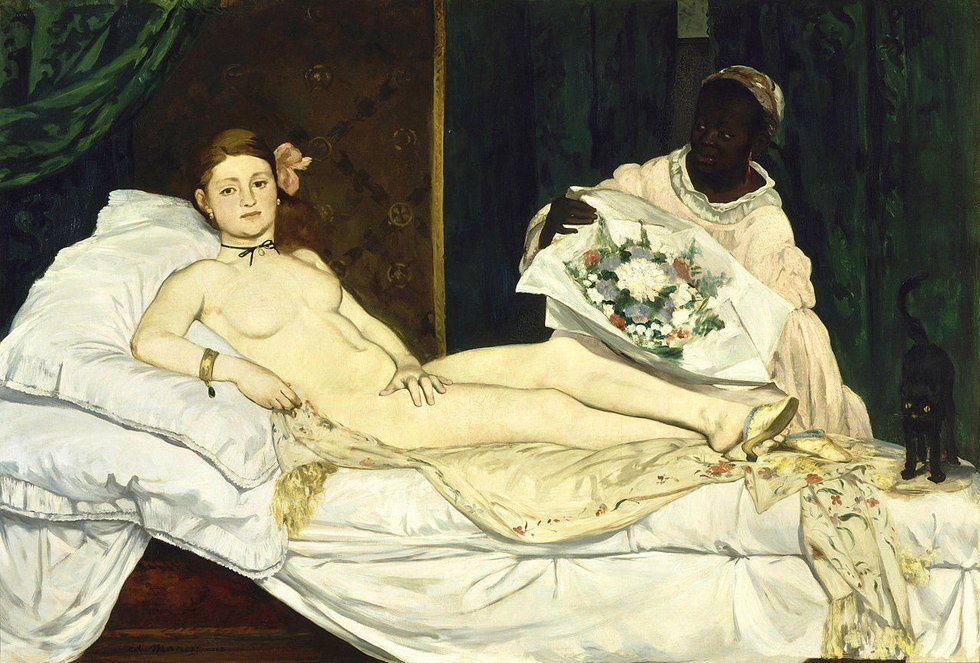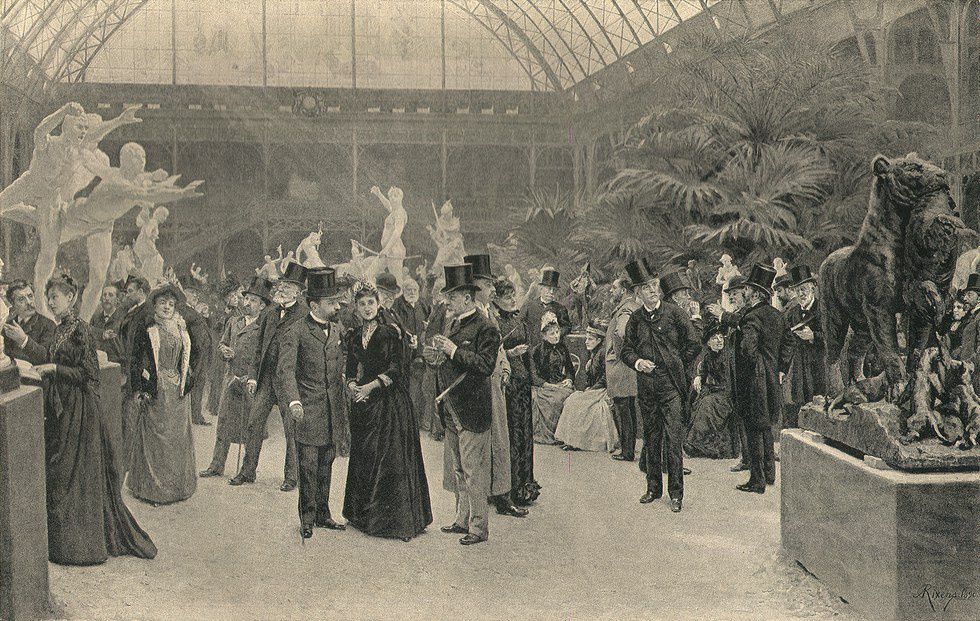From the moment John Singer Sargent’s portrait of a woman adorned in black garb was unveiled, Paris society rejected its scandalized content. But at a time where Manet had already painted a nude prostitute, why was Sargent’s painting so controversial?
Madame X, John Singer Sargent, 1884
When first viewing John Singer Sargent’s portrait of Madame Gautreau, better known as Madame X, it is difficult for the modern viewer to grasp the idea of its controversial past. Today, Sargent’s painting is a monument of American art and is owned by the Metropolitan Museum in New York. A notorious work, Madame X shocked the French. When the painting was unveiled in a jury-selected exhibition in the Salon, Parisians were so horrified that Sargent took refuge in Britain. When thinking about avant-garde movements, innovation, unconventional technique and modern nudity are what generally come to mind. However, it was the not the stark paleness of this high society woman or even the slightly abstracted style that that made the public uncomfortable. While Sargent’s painting did reject academic naturalism, it was the dress Madame X wore that caused distress.
Olympia, Eduardo Manet, 1863
The controversy of Madame X does not make much sense when examining art history in 19th century France. As mentioned earlier, Eduardo Manet exhibited his painting Olympia in 1863. Highly controversial at the time, Olympia depicted a contemporary woman, most likely a prostitute, posing nude and staring directly at the viewer.
Exposing the reality of modern life and depicting a nude woman, not in the guise of an idealized goddess appalled critics. To this day, Manet’s painting is seen as a recognizable ancestor of modernism. However, one cannot say the same for Madame X. Painted long after Olympia, it is unusual that Sargent was criticized.
Formally dressed patrons at the Salon in 1890
Madame X did not create a problem in just any exhibition, but at an exhibition at the Salon. Prestigious and academic, the Salon had been a center of artistic life in Paris since the 17th century. In order to be displayed in the Salon, a painting had to conform to genres: historic, landscape or portrait. Compared to other traditionally rendered portraits that triumphed the Salon, the subversion of Madame X is striking. Rather than a classically beautiful woman adorned in Parisian finery, Sargent reveals the true nature of fashion in high society.
Madame X is an example of an aristocratic and antibourgeois class. Madame Gautreau displays an almost strapless black dress only supported by two slender gold threads. Originally painted with one strap fallen, which was later painted over, money and sex are flaunted by a figure incompatible with bourgeois life. At a time where an individual’s political, economics, and social opinions were determined by the concerns of property values and conventional respectability, it was staggering to see a high societal woman depicted as such. Although Manet shocked the public by painting low life, Sargent shocked by revealing high life foreign to many.
After Sargent left for Victorian England, he continued to produce portraits for the plutocratic Edwardian elite in a similar fashion. Whether depicting dandies, imperial administrators or even politicians, Sargent’s attraction with the dress and style of individuals created some of the most honest and haunting portraits of the modern world. John Singer Sargent’s insight would even return to American art in the age of Andy Warhol: the sexualization of wealth and power of the ruling class.












































